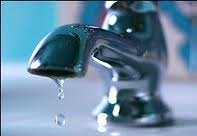Irish Water says it is continuing to work on numerous projects in Donegal to secure high quality reliable drinking water for over 49,000 people.
As the EPA (Environmental Protection Agency) publishes their Remedial Action List (RAL), Irish Water can confirm that they are investing in on-going projects to tackle different risks to the water supply for the residents of Donegal.
Irish Water has adopted a national Asset Management approach to drinking water safety which recognises the complex nature of the service and the need for an integrated programme involving investment, planned maintenance, and standard operation with appropriate automation and monitoring as necessary to upgrade water supplies in Ireland to international standards.
While ultimately requiring investment of over €2 billion in drinking water production and distribution by 2021, significant improvement is being achieved year on year by this approach, including in Donegal.
The RAL subdivides different risks to the water supply and Irish Water is working hard in Donegal to bring those individual water supplies off the RAL and ensure a safe, secure and reliable water supply.
There are no Donegal water schemes on boil water notices.
Cryptosporidium is a very real threat to the water supply if the proper barriers are not in place. Irish Water is currently upgrading three plants to include a cryptosporidium barrier, namely Glenties-Ardara, Owenteskna-Kilcar, and Letterkenny.
Six supplies in Donegal have elevated THM levels, which have been recorded as above the standard in the Drinking Water Regulations. THMs, or Trihalomethanes are chemicals formed by the reaction of naturally occurring dissolved organic material and chlorine which is used for disinfection in order to protect against pathogenic bacteria.
In Donegal 8,280 people are using water supplies where there are elevated levels of THMs. While works are taking place at the Cashilard water treatment plant, the long term solution is to replace the supply with the Ballyshannon water supply. In Creeslough the treatment plant is being upgraded, while the Fintown and Portnoon-Nairn sources will be abandoned and replaced with the Lettermacaward water supply. Both the Rathmullan and Greencastle sources will also be abandoned and replaced with Letterkenny and East Inishowen water supplies respectively.
Two other Donegal schemes which are on the RAL are Pettigo affecting 511 people and Gortahork-Falcarragh affecting 5,000 people. In the short term at Pettigo the disinfection system is being optimised while the long term plan is to replace the source with a Northern Ireland supply. In Gortahork-Falcarragh, where there are excessive levels of aluminium in the water an upgrade of the plant is required.
Speaking about the RAL and the ongoing work in Donegal, Irish Water’s Head of Asset Management Sean Laffey said:
“Irish Water take the provision of high quality, safe and secure water for the people of Donegal very seriously. As a single utility we are able to adopt a single national best practice approach to assessing and managing water supplies for the benefit of the people of Donegal. The work Irish Water is undertaking in Donegal is based on the recommended World Health Organisation (WHO) approach to safe drinking water supply using a ‘source to tap’ risk based methodology which analyses risk rather than waiting for sampling failures.
“The most often cited challenge on the RAL is the level of THMs in the drinking water. Irish Water has put in place the first national THM plan and a prioritised programme of investment to address all inadequacies in drinking water parameters including THMs. By 2021 we plan to reduce the number of schemes on the EPA Remedial Action List to zero with an investment of €327 million to upgrade water supplies at risk from THMs.
“As a single utility Irish Water is able to conduct a comprehensive evaluation of the performance of Ireland’s drinking water production plants and where serious compliance challenges are found we can tackle them more effectively and efficiently.”
Tags:







